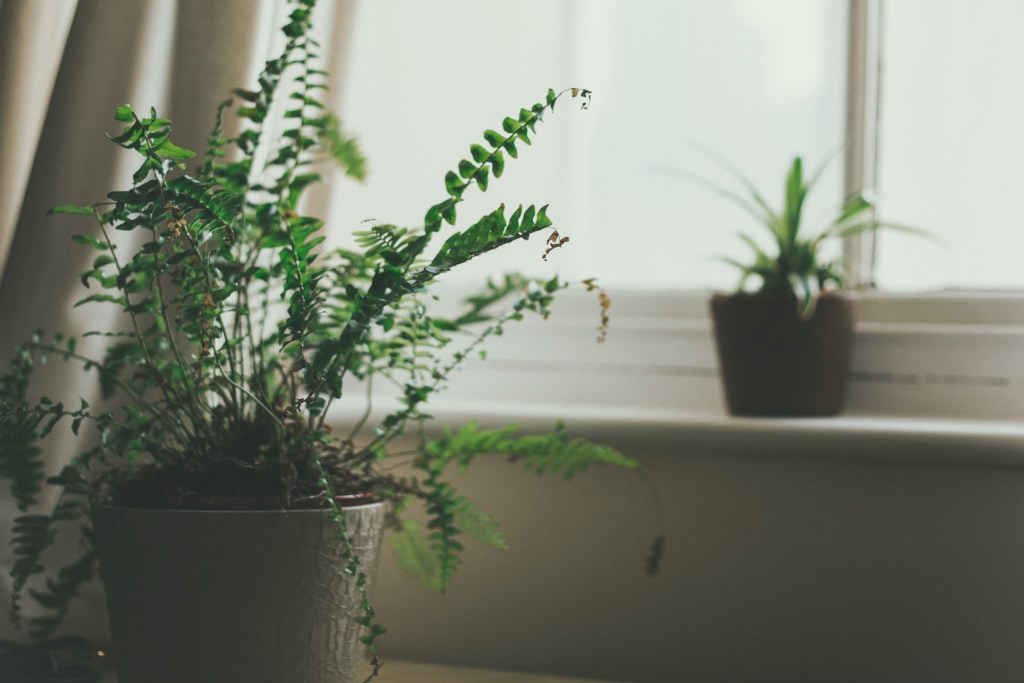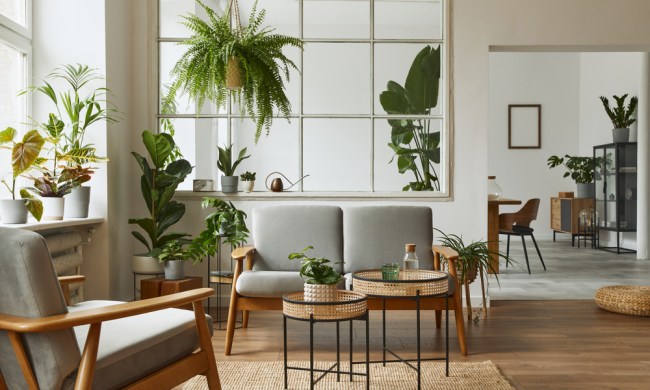Good news: green therapy is real and effective. In fact, research has shown that house plants make us happier and more productive. So don’t be guilty about buying another plant baby to welcome into your indoor garden.
But what if you don’t know where to start? Here, we’ll go over some of the best potted indoor vines and climbers that are actually so easy to grow even in your kitchen or on your coffee table.
What’s the difference between climbers, vining plants, and trailers?
When you think of vines, you might think of the quintessential wall-climbing varieties grown in outdoor gardens. With that said, growing vines indoors gives you freedom to choose whether you want your chosen plant to climb or trail, i.e. hang down.
Some will naturally reach up and start creeping up your walls, and others will need a little guidance or something to hang onto. Think trellises, bamboo stick supports, and wall fasteners.
House vines are typically grown as trailers, since maintaining a vining wall requires a bit more upkeep. They’re commonly potted and hung up from the ceiling or placed on a tall shelf. They spill over their container and trail down toward the ground, gracefully injecting your room with some refreshing greenery.

How do you grow a vine indoors?
Conditions vary between species, but overall, most indoor vining plants thrive in similar environments.
- Soil: Most indoor plants prosper in bagged commercial potting soil. Make sure the mix is a balanced blend of organic and non-organic matter since the soil won’t drain as easily indoors as it would outside. Add sand, perlite, or other non-organic materials if you suspect that your plant isn’t draining water properly.
- Pot: Some vine varieties can be grown in a jar with just two inches of water. If you want to stick to soil gardening, choose a pot with drainage holes and when you repot, pick one that’s at least two inches wider than its current home. Gardening pros recommend repotting your plant around a year and a half after bringing it into your home. Repotting gives your plant more room to expand and thrive.
- Light: It depends on each species, but most indoor vines will do just fine in low light, indirect light, and even in the shade. Some varieties like the Swedish Ivy love bright light, however, so double check with each variety beforehand.
- Water: Most indoors vines aren’t too fussy with watering, either. Keep the soil moist between watering with a spray, or water when the topsoil feels dry.
- Pruning: This is an important step for indoor climbers, especially if you’re trying to get your plant to grow a certain style or direction. Since vines also grow quickly, you’ll want to clip off new growth if you prefer a manicured look. Trim with small pruning shears as necessary. Here’s a tip: you can keep the cuttings in jars of water and you’ll have a brand new plant.
What vines grow indoors?
Here are some common indoor vining plants we recommend. They’re all beautiful and hardy. In other words, they’ll survive, even if you forget to water them for a week.
- Climbers
- Monstera (different varieties)
- Spider plant
- Trailers
- Inch plant
- Peperomia
- String of Pearls
- Tradescantia pallida (Wandering Jew)
- Both:
- Pothos
- Ivy (different varieties)
- Heartleaf philodendron
- Creeping fig
What is the fastest growing indoor plant?
Some of the plants above actually make it onto the fastest-growing indoor plants list. Ivies, pothos, spider plants, and philodendrons are notoriously fast growers, states Gardening Know How. English ivy, in particular, grows rather quickly, so grab a pot or two of those if you want cascading vines ASAP.
Balcony Garden Web says other species include the snake plant, all varieties of ficus, lucky bamboo, aloe, and sweet potato vines. Maidenhair fern and arrowhead plants are also great choices if you want something a little more unusual.
So what is a good vining plant? It really depends on what look you’re going for, since most have similar care requirements. If you provide these basic conditions – well-draining and moist soil, low to indirect light, and space to grow – your indoor vine will blossom. Whether you choose a trailer or a climber, designate a little time whenever necessary to prune your plant. Other than that, you can enjoy your daily dose of nature with little worry.



